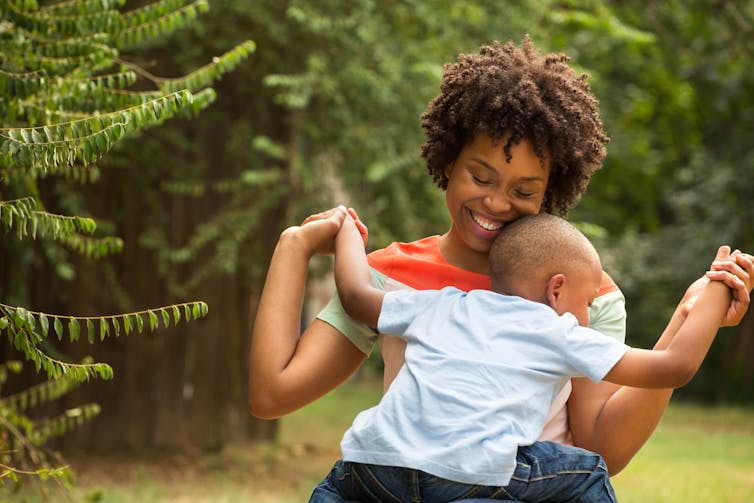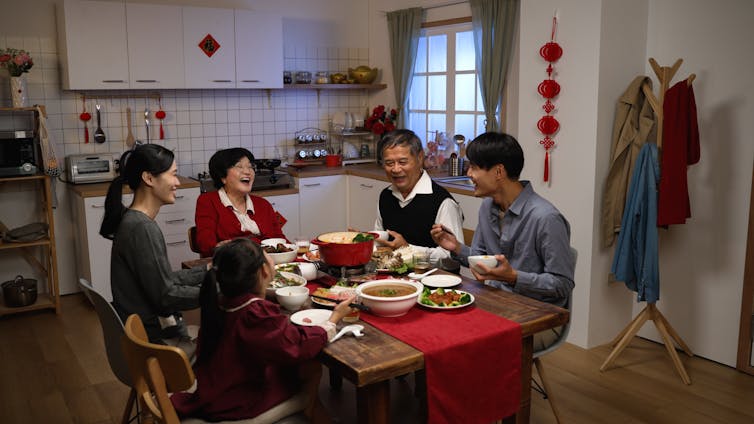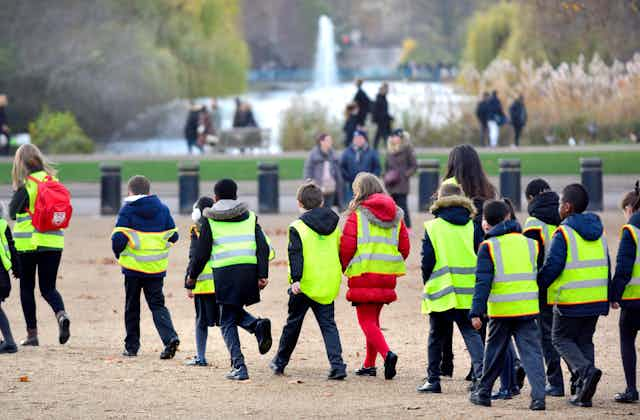Actor Lupita Nyong'o describes colourism as “the daughter of racism” in “a world that rewards lighter skin over darker skin”. This form of prejudice sees people more penalised the darker their skin is and the further their features are from those associated with whiteness.
In 2021, we developed the Everyday Colourism Scale to capture individual people’s perceptions of interpersonal colourism. This tool has allowed us to start to examine associations between experiences of colourism and demographic characteristics and various health and wellbeing outcomes. We found that experiencing colourism is associated with negative body image.
Our skin shade study has found that colourism affects both men and women, and can shape how people feel about themselves and how they choose romantic partners. It also shows how often this starts at home. We have found that families in the UK play a significant role in introducing children to colourist views and that these, in turn, can shape and undermine family relations.

How colourism can play out in the home
For our study, we conducted interviews in 2019 with 33 people of colour (24 women and nine men) who were black, South Asian, East Asian or of mixed ethnic backgrounds (predominantly black and white).
We found that women and men’s experiences of familial colourism differed. The women we spoke to were targeted and affected more than men.
In a patriarchal society, women are subjected to global appearance ideals that posit light skin as beautiful and feminine. Our previous work on black men’s experiences of colourism found that light skin is seen as desirable in women – it is often a status symbol.
Our new findings show that familial awareness of the social capital inherent in light skin, particularly for women, affects how families treat their children.
Marie, a 50-year-old Chinese woman who participated in our research, described conflicting feelings about going out in the sun due to colourism from women in her family. She said:
I don’t like going outside because I’m going to get darker and end up looking like a peasant. My parents were peasants. When they were growing up, they used to work in the countryside. I remember as a kid, mum saying: ‘No, don’t go outside because you’ll get dark, and you’ll end up looking like you work in the paddy fields.’
Marie’s story suggests that family colourism may relate to feelings of shame. From her account, her mother seems to associate dark skin with low socioeconomic status and wants to distance her family from it.
Other participants described how dark skin was seen as ugly in ways that suggested that it might also be a source of shame. Portia, a 51-year-old black woman, said that her father told her, at 13, that she was “black and ugly” like her grandmother – his own mother. “It’s something that is etched on my brain,” she said. To her mind, it showed “how deep this self-hatred is”.
Participants also discussed the impact of family colourism on romantic relationships. Chloe, a 33-year-old woman with a black mother and white father, said skin shade influenced her choice of partner. “This is really sad,” she said. “My mum doesn’t like us to date black people … She only wants us to date white people.”
Chloe later said that her mother did not mind a former Chinese boyfriend, but was opposed to her dating south Asian people. Her mother was also uncomfortable with her having a partner from a mixed ethnic background.

‘Oppositional consciousness’
Some of our participants described the impact of familial colourism on their sense of self-worth, body image and wellbeing. Divya, a 43-year-old Indian woman, suggested that her mother’s colourist views negatively affected her when she was growing up:
One of the biggest issues I had was with my mum always, always going on about how it’s better to be fairer, that you’ll only find a boy if you’re fairer and you’re only beautiful if you’re fair. And I think that really, really got to me.
These findings chime with what scholars have found in the US and Brazil. Families can actively make children aware of colourism and inflict it too. These same studies, though, have also highlighted how some families speak about colourism as a way of opposing and resisting it.
US sociologists JeffriAnne Wilder and Colleen Cain talk about “oppositional consciousness” to describe the process by which families can challenge colourist views and promote acceptance, celebrating all skin tones.
Our participants, too, described how their families helped them to appreciate people of all skin shades. Some had parents who encouraged them to take pride in their skin shades. Others described trying to raise awareness about colourism among their own children.
Portia told us that she talks with her son about colourism and they do not let it slide when they encounter it. Doing so, to her mind, is about healing, “because otherwise you end up carrying this stuff around, thinking it’s your fault. It is not.” It is also about ensuring her son grows up with confidence: “I don’t want him carrying this baggage around. I want him to go into the world as confident as he can be as a young black man.”
Colourism has a profound impact on people’s wellbeing. Experiencing this at the hands of the people closest to you is detrimental. This is particularly the case since racialised minority families are often seen to be havens from the racialised prejudice and discrimination experienced outside the home.
Figuring out how to challenge it, then, is paramount. By educating the next generation, families have a key role to play in disrupting the transmission of this prejudice.
For one participant, Malakai, it is about teaching love and positive parenting: “You, as a people, need to educate your children and tell them that they are beautiful. Teach the younger ones, educate them. And teach love among our people.”

